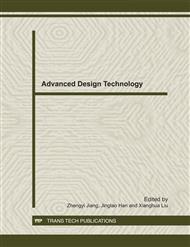p.764
p.770
p.779
p.783
p.788
p.792
p.796
p.800
p.806
Aerodynamic Power of Geotechnical Centrifuge
Abstract:
The calculated aerodynamic power by using formulas in references is always much less than practical one. The reason was found through analyzing the transformation of mechanical energy output by the motor to heat energy of the whole system and motion energy of the air newly getting in based on the relations of moment equilibrium. New formula of aerodynamic power and equation of air following flow ratio were deduced for closed chamber and holed chamber geotechnical centrifuges. The aerodynamic powers of one constructed closed chamber geotechnical centrifuge and one constructed holed chamber geotechnical centrifuge were computed by using different formulas and the results were compared with each other as well as the practical values, respectively. The comparisons show that the new formulas are much more accurate than previous ones in references.
Info:
Periodical:
Pages:
788-791
Citation:
Online since:
December 2011
Authors:
Price:
Сopyright:
© 2012 Trans Tech Publications Ltd. All Rights Reserved
Share:
Citation:


